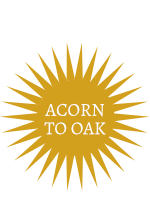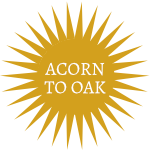
Along your homeschool journey, you may hear the words “child-led,” “unschooling,” “self-directed,” “child-centered,” “inner-discipline,” “project-based learning,” or “the child is the curriculum.” What does it all mean? You might ask, “Am I doing enough?” “What should I be doing all day?”
Although these terms seem to have generally the same meaning, they are vastly different approaches to education and are embedded in different educational philosophies. As a parent, this can lead to a lot of overwhelm and self-doubt. So let’s keep it simple.
What is Child-Led Learning?
As home educators, we have the unique privilege to let the child lead their learning. Every day can look different from the next. In home education, we have autonomy. This autonomy encourages kids to take ownership of their education, make decisions, and solve problems independently. These independent thinking and problem-solving skills will make them lifelong learners and will allow them to succeed in many areas in adulthood.
Child-Led Learning is Interest-Driven.
Children are encouraged to explore topics that genuinely interest them. This can lead to a more engaged and motivated learning experience.
Child-Led Learning Follows The Pace of the Child.
If a child is engaged in a certain topic, you do not need to move on to another just because the week is over. A child can extend or revisit lessons as they choose. A day doesn’t have to consist of math, science, reading, social studies, etc. A child can explore a single math concept for an entire week if they choose to, and then move on to science the next. If a child is overwhelmed by a certain subject, they can skip it and revisit it later. Learning does not have to be linear.
Child-Led Learning is Hands-On.
Child-led learning involves hands-on, experiential activities and learning materials. This includes experiments, projects, recipes, and practical applications of knowledge, allowing for a more holistic understanding of the concepts explored.
Child-Led Learning is Intrinsically Motivated
Child-led learning relies on intrinsic motivation. Children are motivated by their own curiosity and desire to learn rather than following a checklist or schedule.
Child-led learning is aligned with the idea that children are naturally curious and capable learners. It aims to foster a love for learning by respecting and harnessing the innate curiosity of each child. The caregiver takes on the role of a facilitator rather than a teacher.
To facilitate learning opportunities, we can use language that engages curiosity. Here are a few examples of questions you can ask your child to initiate a self-directed lesson:
- I wonder…
- What do you think?
- What does this remind you of?
- Tell me about it.
- I can’t visualize it. Can you draw me a picture?
- What did you see?
- I wonder what will happen. What do you think?
- How did you figure it out?
- What could you do differently?
- What do you want to know more about?
- How can we find out?
- What do you already know about this?
- I’m out of ideas. Do you have any?
- This is great! Did you reach your goal?
- Do you have any questions today?

So now you may be asking…
If I am engaging in child-led learning, how can I follow a curriculum?
Acorn to Oak’s Early-Learning Curriculum is entirely child-led. There are no worksheets. Alphabet Forest and Kinder Forest are designed to help the parent facilitate engaging and enriching learning opportunities with a format that allows flexibility to follow the child. You can learn more about Acorn to Oak’s educational philosophy here.
Ready to try an inquiry-based learning style? Our Science Curriculum is now available!







